
Understanding Cement with Vicat Testing
- June 25th, 2024
- Category: Equipment Guides
Understanding Cement with Vicat Testing The quality and performance of cement are crucial in construction projects. Vicat testing is a vital tool for assessing these properties, ensuring the cement meets the required standards. This blog post dives into the world of Vicat testing, explaining the different tests conducted and... Read more >
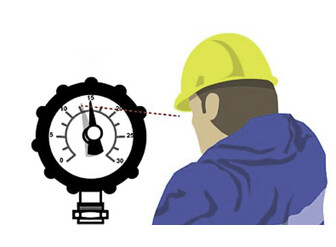
Four Common Errors To Avoid When Performing a Pull-off Test
- November 18th, 2022
- Category: Equipment Guides
Four Common Errors To Avoid When Performing a Pull-off Test Pull-off testing using Hydrajaws equipment is easy, straightforward and accurate when done correctly. In this article we have identified four common mistakes, which may affect test results, as well as some methods to use to avoid these mistakes. 1. Incorrect use of the... Read more >
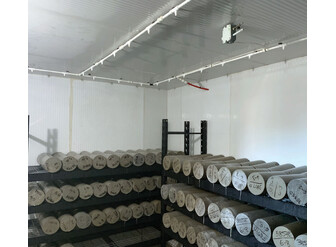
Curing Rooms for Concrete Specimen Testing
- September 28th, 2022
- Category: Equipment Guides
When it comes to testing concrete cylinders and cubes, the proper storage and curing of specimens is just as important as the testing process. Not paying attention to properly curing and storing specimens can lead to erroneous compression test results. Dry conditions, lack of humidity, low and high temperatures can all... Read more >

Protect Your Assets and Minimize Risk with Regular Concrete Inspection
- November 2nd, 2021
- Category: Equipment Guides
Climate Change is Corrupting Infrastructure As atmospheric CO2 levels continue to increase with global warming, the safety of concrete structures is in jeopardy. Climate change has become a major concern, and a contributing factor of reinforcement corrosion in buildings, bridges, and other concrete infrastructure around the... Read more >
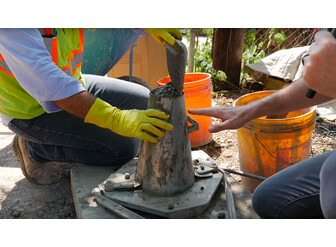
Concrete Slump Testing
- January 14th, 2021
- Category: Equipment Guides
Knowing the quality of the concrete being used in construction is a requirement at building sites worldwide. Concrete slump testing is a quick and easy procedure that can be performed in real-time and on-site that is used to determine the workability as well as the consistency of fresh concrete. Concrete with slump values that... Read more >
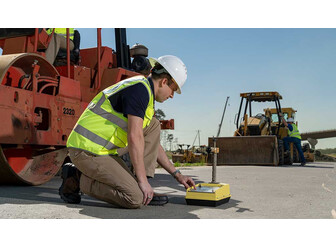
How to Measure Field Density of Soil Using Nuclear Density Gauges
- November 18th, 2020
- Category: Equipment Guides
Soil density is an important factor to most construction projects and provides critical support for buildings, roads, pavements and other structures. Soil is frequently disturbed during the development process resulting in the introduction of air or water into the ground. Any water particles or air voids must be removed from... Read more >

Using the Hamburg Wheel Track Test for Balanced Mix Design
- October 15th, 2020
- Category: Equipment Guides, Guest Posts
This guest post is written by Fan Yin, PhD. He is an Assistant Research Professor at the National Center for Asphalt Technology at Auburn University. We are sharing it here, with his permission, but the original article may be found here. The Hamburg Wheel Tracking Test (HWTT) per AASHTO T 324 is widely used by asphalt... Read more >

Ductility Testing with Humboldt Solutions
- October 5th, 2020
- Category: Equipment Guides
What is Ductility Testing? Materials that are capable of deforming plastically before fracturing are defined as ductile. Ductile testing, therefore, involves measuring the amount of stress that can be applied to a material without fracture. Why is Ductile Testing Important? Ductile testing will tell you the tensile strength of... Read more >
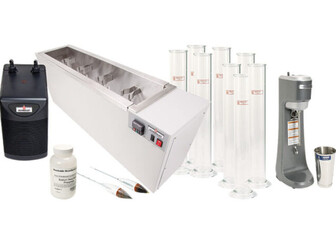
Hydrometer Analysis with Humboldt Solutions
- August 26th, 2020
- Category: Equipment Guides
What is a Hydrometer? Hydrometers are used to measure the relative density of a liquid. They are primarily made of glass and have two parts: the hydrometer with a mercury weighted bulb at the bottom and a cylinder with graduation marks. The science behind the hydrometer is simple – the lower the density of the liquid, the more... Read more >

Is It Time to Get a New Scale or Balance?
- April 15th, 2020
- Category: Equipment Guides
We understand, you get attached to your lab balance. You’ve had it for years and tend to rely on it like a third hand. But how long is too long to use the same balance? When is it time for a replacement? First off, consider these questions: Does your balance need maintenance more often than it used to? Does your balance hold... Read more >

